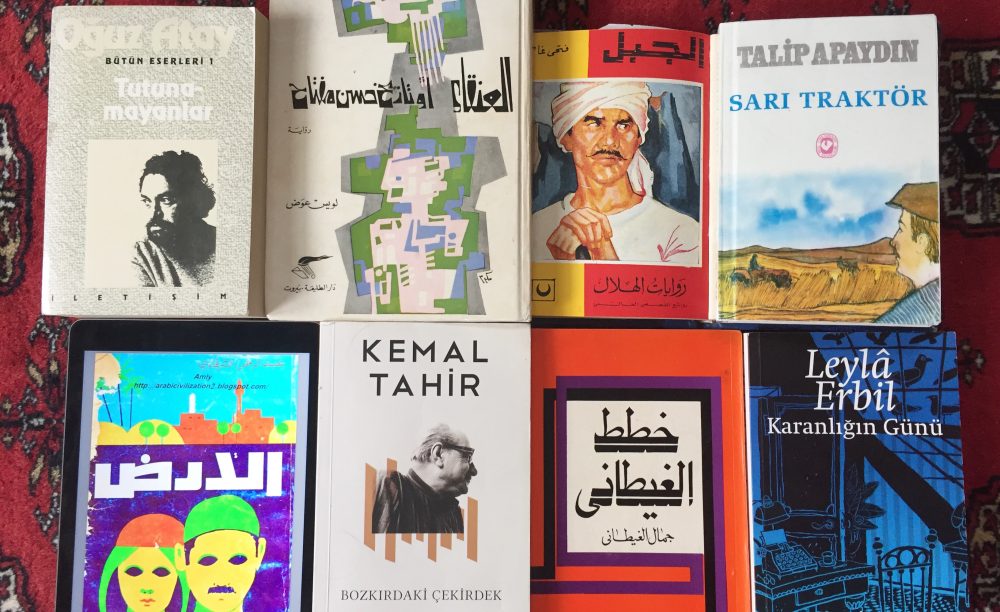Citation:
Relevance:
Marxist reading of 20th century Egyptian history
Notes:
-big landowners preferred uprooted irregular labor to tenant farmers, but also them to mechanized labor
-interests of landowners clashed with growing productive forces of capitalism
-colonial power relied on local business elite which has no solid domestic foundation.
-newer commercial bourgeoisie was more local in origin. investment originally had to come from the countryside until WWII.
-relations of production which let ruling class exploit masses were transitional between fueudalism in decay and capitalism, which paralyzed country. direct reflection of Egyptian dependence on global market.
-petty-bourgeois elite were in favor of capitalism and hostile to those in the way.
-the petty bourgeois is the connecting link between all these dissociated social levels. monopolize intellectual activity ideological background based on individualism, elitism, and idealism.
-interwar system based on two rival institutions: the palace and the wafd, who could be played against one another.
-key posts in civil service reserved for palace, why Wafd was only ever an appendage of power structure.
-value system of puppet kind regime disintegrated after the war.
1945-47 workers and students alliance to push British out of canal.
-King used Palestine war as a way to recapture popular patriotic movement.
-Free officers original plan to streamline army made them realize they needed to change state structure.
-Cairo fires were dispossessed masses setting fire to symbols of class privelege and haunts of imperialism (groppi, rivoli shepheards, etc.)
-1950-1952 wildcat strikes and independent movements, while the communists were still theorizing.
-Free officers and MB both trying to seize power, free officers had positions in state apparatus, MB had mass support.
-Communist movement lived a life of its own remote from mass support
-Free officers only understood superstructural crises, wanted to promote capitalism
initial stage of regime (1952-1954) the council of the revolution was led to suppression of all parties without its own class foundations, relative autonomy of state power to suppress mass movements.
-second stage (1955-1958) Suez crisis gave huge legitimacy to the regime, soviet support and growing ruling class abmitions of petty-borgeois elite to push aside traditional bourgeoisie.
-third stage (1959-1963) had to choose between crisis of capitalist growth, or taking over with state bourgeosise to orient the economy in keeping with the requirements of capitalist expansion. 61-63 state power destroyed economic power of traditional bourgeoisie, political tutelage and “anti—capitalist” demagoguery.
years of decline (1964-67) autonomy began to narrow as US and USSR closed in, state bourgeoisie had consolidated position and wanted to put brakes on industrialization, wanted to play increasing political role, ending its effective autonomy, and withering its demagogic power.
-seperation in mass opinion between state power and ineffecitve state bourgeoisie until 1967.
“bloodless revolution” “no dictatorship of one class over the others” . Salazar regime type liberation rally, and the Arab Socialist Union corporatist trade-union and parlimentary life. workers and management labeled “salaried” while rural bourgeoisie and peasants labeled “peasantry”
-masses basically knew (1955-1963) that they weren’t represented, as their small initiatives were crushed, but the intellectuals stood by uncomprehending.
-regime put down worker’s strike at Kafr el-Dawwr
-From 1959-1964 most communists jailed until given amnesty, Nasser thinking of using their theoretical and organizational skills as long as they disolved their own orgs. appointed a few dozens to various press services, not only implementing regime’s policies, but for translating them into demagogic language (yusuf in man who lost his shadow), communists joined ranks of regimes intelligenstia, that segment of the state apparatus specializing in demogogery.

